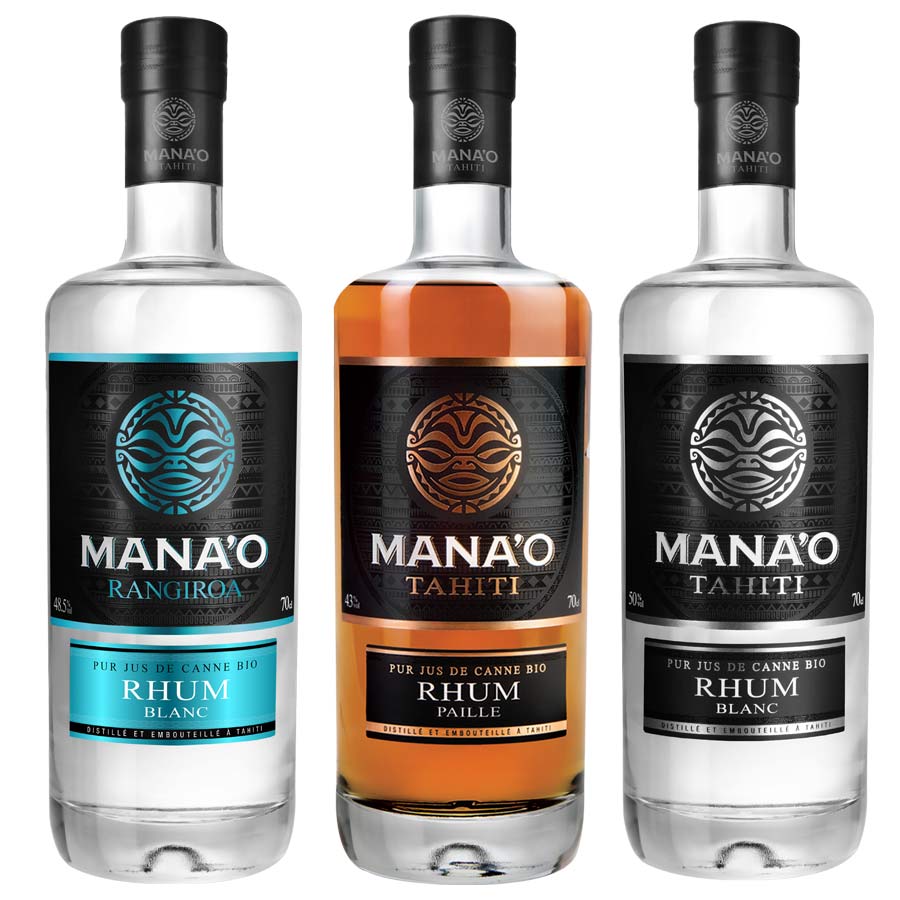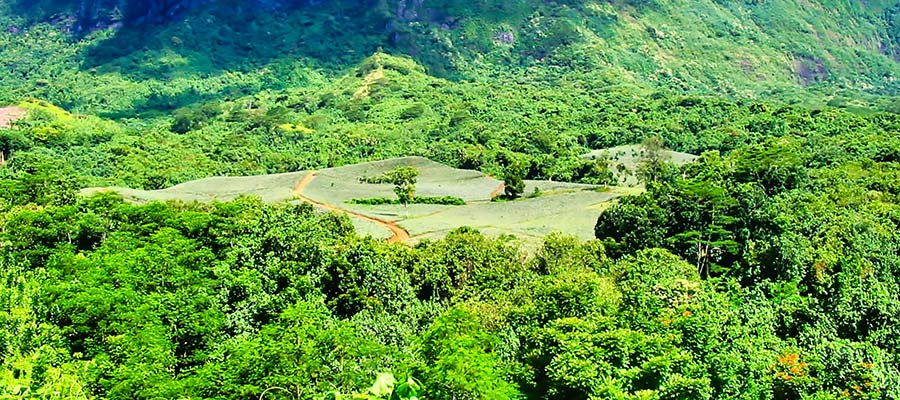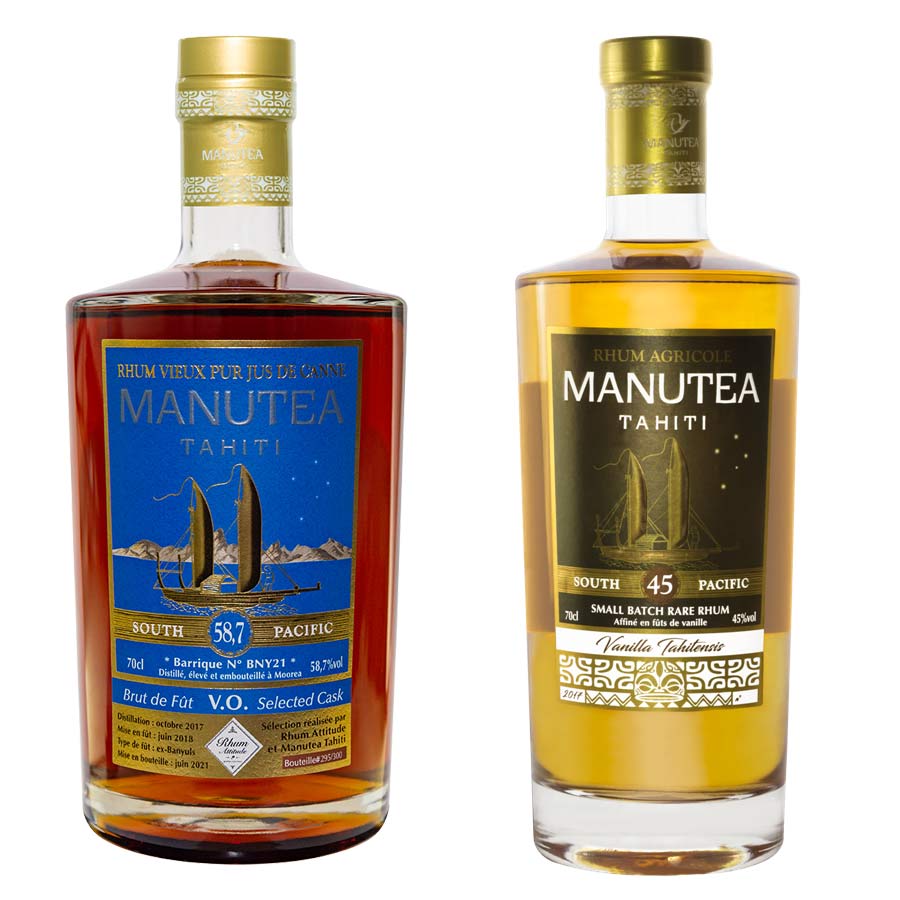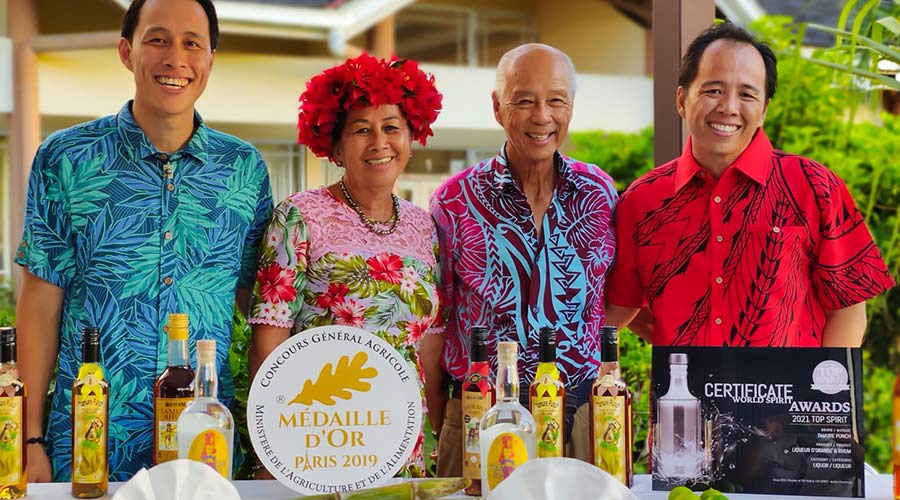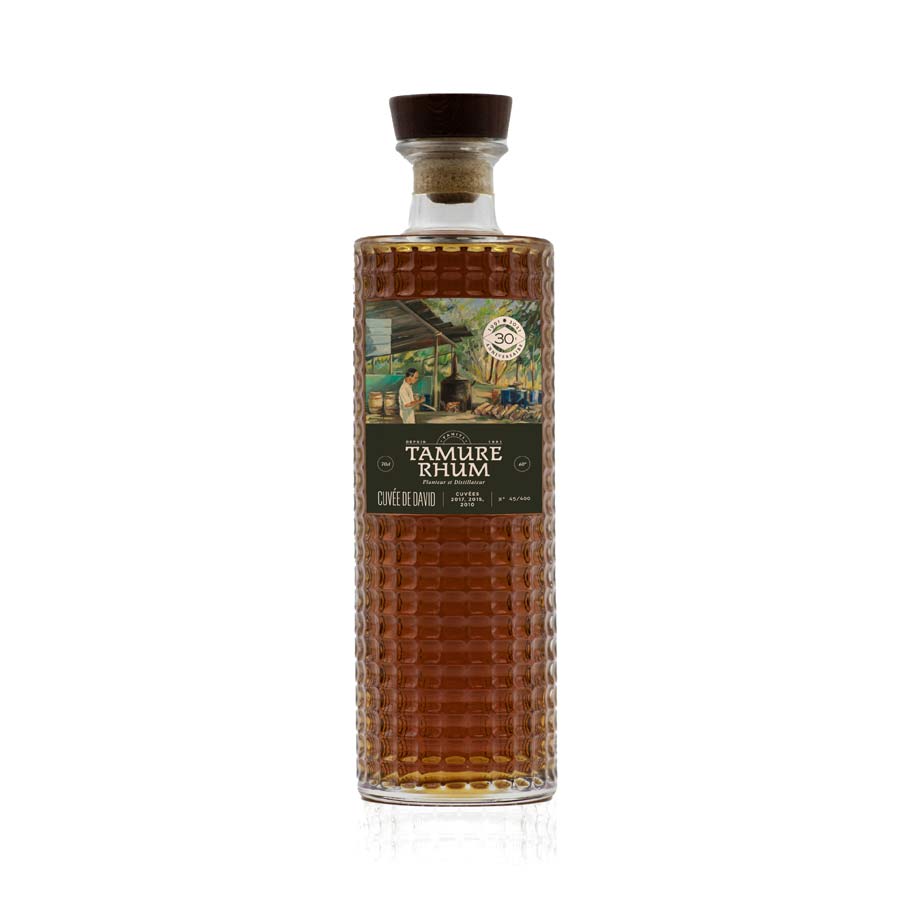MANA’O (since 2015)
The production of Mana’o rum is a challenge. The brand is sourced from three islands several hundred kilometers apart: two hectares in Tahiti, one hectare on the atoll of Rangiroa and five hectares on Taha’a.
A total of eight hectares are organically cultivated, and other hectares are currently being planted. About 35,000 bottles are produced per year for the moment. The canes are harvested and pressed locally, and the juice fermented in Rangiroa and Taha’a.
The juice is then sent to Tahiti by boat (a day’s sail) to be distilled. The rums are then sent to the barrel cellars of the Domaine du Vin de Tahiti on Rangiroa where they are stored and aged.
“This circuit will be considerably shortened since the distillery (independent of Mana’o) and the aging cellar are being built on Taha’a,” explains Olivier Duret. “But the bottling will be done in Tahiti because that’s where the market is.”
The range:
For now, the organic range includes a white rum Mana’o Tahiti at 50%, a white rum produced on the atoll of Rangiroa Mana’o Rangiroa at 48, 5%, and a rum Paille Mana’o Tahiti at 43%.
New: a very confidential 2017 aged rum at 44.5% aged in Armagnac barrels, a limited edition of 1800 bottles.
MANUTEA (since 2015)
The rums sold only in Polynesia are labeled ‘rhum agricole,’ whereas those sold in France are labeled ‘rhum de pur jus de canne.’ However, it is the same juice! Sugar cane is sourced from the Pari Pari estate in Taha’a and the Hotu Fenua plots on Mo’orea.
The range:
Quite extensive, it includes a white rum at 40%, another at 50% and a third called Quintessence at 59%. Also a rum aged in wood at 42%, the inevitable Vanilla Tahitensis at 44% which spent at least 6 months in French oak barrels that were used for the elaboration of Tahitian vanilla extract 45%, an old rum VO at 43%, and a very old rum VSOP at 41%.
There were also several limited editions of raw cask (bourbon Private Cask 59.6% and banyuls BNY21 Selected Cask by Rhum Attitude at 58.7% or banyuls BNY13 V.O. Single Cask at 44%).
New products: the 55% organic Mo’orea will soon be available as a parcel rum, and in 2022 the arrival in France of the VSOP, an XO (2023 in Polynesia, 2024 in France) and a special VSOP edition that will have spent time in pineapple wine barrels.
TAMURE (since 1992)
Today, David Moux reigns over 17 hectares where sugar cane represents about 10 hectares (fruit is also grown). A part of the cane goes to the fresh cane juice elaborated by the brand and the rest to the rum, which represents about 10 000 bottles per year. The estate is cultivated in conventional agriculture.
Chicken droppings (from the estate) are used to amend the soil. Herbicides are applied once per harvest, then everything is weeded by hand.
The distillery has a still and a column. “The column is used more for punches and ‘rhums arrangés’ but we have plans to use it to produce premium white rums as well,” explains Youk Moux.
The range:
The Tamure punch range includes five references (passion fruit, orange liqueur, Tahitian vanilla, pineapple and ginger). Tamure also offers a white rum of pure cane juice in double distillation at 56%. The brand had released a 12-year single cask rum five years ago but it is now sold out.
The new releases: Tamure released two cuvées to celebrate the 30 years of the distillery and to honor the two founders: David and Hélène Mouk. The cuvée ‘David’ is the result of a blend of vintage rums from 2010, 2015 and 2017. And the vintage ‘Hélène’ is a vintage of 2006 (15 years of age). Note that in 2023, a new edition of Tamure’s single cask is planned.

